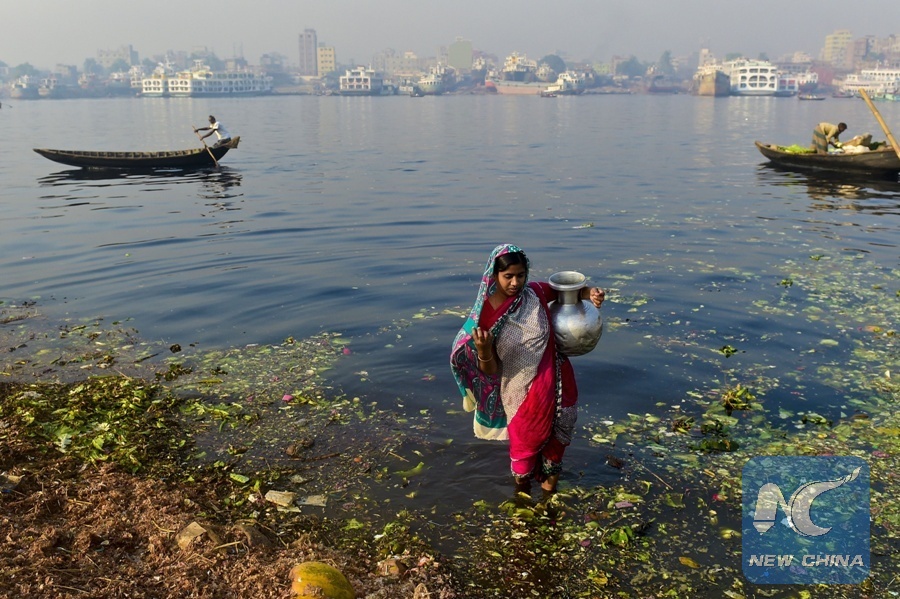
In this photograph taken on March 19, 2015, a Bangladeshi woman collects contaminated water to be used on produce at a vegetable market from the polluted Buriganga in Dhaka. Twenty million poor Bangladeshis are still drinking water contaminated with arsenic. ( AFP File Photo / MUNIR UZ ZAMAN )
WASHINGTON, Aug. 23 (Xinhua) -- An "alarmingly high" level of arsenic contamination was found in groundwater beneath the Indus Plain in Pakistan, putting up to 60 million people at risk of a variety of serious health problems including cancer, a new study said Wednesday.
The study, published in the U.S. journal Science Advance, examined groundwater samples collected from nearly 1,200 sites from across the country.
Then, a model incorporating topographical, geochemical and hydrological parameters was used to create the first comprehensive "hazard map" of this poisonous element for the whole of Pakistan.
It showed that many people in eastern Punjab, which includes Lahore, the country's second most populous city, are exposed to a high risk of arsenic contamination.
"In many parts of the densely populated plains along the Indus River and its tributaries, arsenic concentrations in groundwater supplies exceed the WHO (World Health Organization) guideline of 10 micrograms per liter," the study said.
"Very high concentrations, above 200 micrograms per liter, are found mainly in the south; the highest measured in this study was 500 micrograms per liter."
Altogether, 50 to 60 million use groundwater which very likely contains more than 50 micrograms per liter.
"This is an alarmingly high number, which demonstrates the urgent need to test all drinking water wells in the Indus Plain," first author Joel Podgorski, a geophysicist at the Swiss Federal Institute of Aquatic Science and Technology, or Eawag, said in a statement.
In previous studies, sampling has only been conducted at the village level in Pakistan.
The researchers called for emergency solutions, including health intervention programs, finding alternative resources of drinking water and evaluating options for removing arsenic.
"People in many areas are completely unaware of the risk because their groundwater wells have never been screened for arsenic," the study said.
Arsenic is one of the most common inorganic contaminants found in drinking water worldwide.
This metalloid occurs as a natural component of sediments, with small quantities being dissolved in groundwater as a result of weathering.
The inorganic salts of arsenic are tasteless and odourless, but highly toxic to humans. If ingested over long periods, even low concentrations, can cause damage to health, including skin disorders, lung cancer and cardiovascular diseases.
The WHO estimated that around 150 million people rely on groundwater contaminated with arsenic worldwide.

